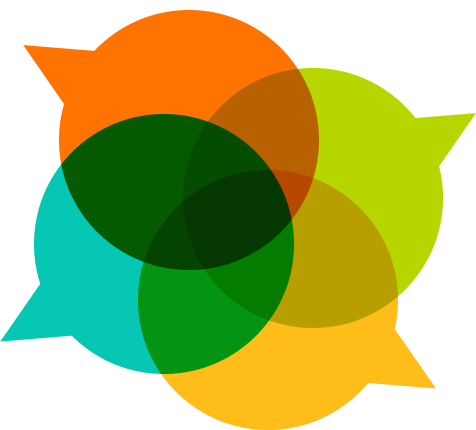Learning circles have been a transformative component of society, but its history is largely hidden! Learning circles, unlike traditional public schools and higher education, do not take up big spaces, do not receive millions of dollars to run, do not fill auditoriums of passive audiences and certainly do not demand a large ceremony when one is complete - that is the point! Instead, learning circles are found in small groups meeting in churches, parks, cafes, libraries, basements, and are run by volunteers who do not beat their chest and say to the world “take note of what we have done!”. But, I digress.
So where do we begin in this history of, not just learning circles, but also ‘learning in a circle’? Well, I should start by mentioning the massive influence on this very short summary was Sturla Bjerkaker’s book Learning Democratically Using Study Circles (2006), and also some notes provided by David Rosen, both P2PU contributors! Thank you both!
Early History
It is worth mentioning that the idea of people getting together to help each other learn something without a ‘qualified’ teacher is perhaps the oldest form of education. Sure, there have always been people who have had prominent positions in small groups to guide and share knowledge, but we should also remember that long before schools, long before Aristotle, people had problems, and they solved these problems by learning things with groups of people just like them.
We should also remember that Indigenous communities all around the world have been practicing different models of non-hierarchical education for thousands of years, often talking through issues in circles or using a talking stick for example. Furthermore, much of the leadership, organizing, facilitation, and relationship-building of ‘circle-based learning’ was taken up by marginalized and excluded communities and it is based firmly on the unrecognized social work of women and as well as their commitment to dialogue and social change.
But the learning circle, as we know it today, where did it come from exactly? Here are a few other details that might help answer this question.
1870 - Chautauquas
Chautauquas were the “Ted Talks” of the 19th century. People met up in rural parts of America, starting in New York State around the 1870s, to hear speakers, learn things in large assemblies, see performances, read books, and through this, a kind of folk-learning model emerged called a study circle. At its peak in 700,000 people were involved in 15,000 study circles in America. (and, some Chautauquas are still running today!)
1900 - Sweden use of Study Circles
The study circle model was taken up by labour movements in Sweden, led by the “founding father of study circles” Oscar Olsson. It was meant to contrast the “top-down” approach to education, emancipating the working class by the workers themselves. Over the next century, Nordic countries took up the study circle model, and today, hundreds of thousands of Scandinavians take part in study circles every year. State governments currently fund national study circle associations and political parties even have their own study circle clubs.
1920 - Antigonish Movement
Father Moses Coady and Rev. J.J. Tompkins heard about the study circles being run in Denmark and thought the idea could be useful to rural Maritime farming and fishing communities of Canada. With support from St. Francis Xavier University in Antigonish, Nova Scotia, Coady and Thompkins promoted the study circle model which led to hundreds of credit unions and cooperatives being developed in the late 1920s and 30s. This initiative was coined “the Antigonish Movement”.
20th Century - Popular Education
Although not explicitly informed by the study circle model, the 20th century hosted a wealth of variations of popular education movements across Latin America and Africa. These movements were political and liberatory in nature, focusing on decolonialism, workers rights, land rights, women’s’ rights, and broadly, ‘consciousness-raising’ against oppression. Popular education often takes place in small groups, in non-hierarchical structures through the use of a facilitator or non-expert, and based on learning through dialogue. Sound familiar?
1989 - Study Circles Resource Center
Businessman and philanthropist Paul Aicher had been funding and supporting discussion clubs and civic deliberation groups for a number of decades before founding the Study Circles Resource Center in 1989, which focused on promoting grassroots initiatives, dialogue and community-building across the United States. The organization is still around today and is now called Everyday Democracy.
Study Circle or Learning Circle?
Different variations of study circles and learning circles can be found around the world. You’ll find dialogue circles in Australia, and quality circles in Japan. Some people just meet and learn things together and don’t have a name for it (they just say it works fine!). A few other terms that have connections to the general idea are study clubs, community action groups, rural development groups , reading circles and folk schools.
Additional Resources
History of P2PU learning circles
P2PU History of Learning Circles Slides
Participedia - Study Circles
Changing Communities. The Study Circle – For Learning and Democracy
Learning democratically using study circles - Bjerkaker, Summers (2006)
Voluntary-based study circles and related municipal policies: international best practices - Duke & Hinzen (2020)
